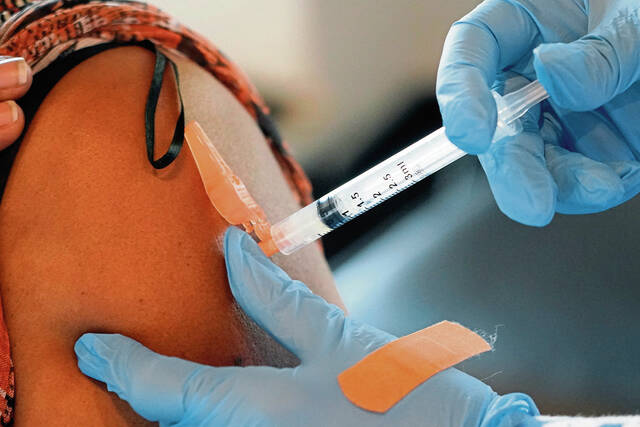Vaccines for flu, covid available as wastewater tests show high levels of virus

There are now updated flu and COVID vaccines available, and an infectious disease specialist in Pittsburgh is recommending using an at-home, over-the-counter test that can distinguish between the two viruses.
Those who are sick can find out what virus they have with an at-home test and nasal swab, which can help them seek treatment if needed and stop the infection from spreading.
Dr. Amesh Adalja, a senior scholar at the Johns Hopkins Center for Health Security, stated, “I think people should use this.” “They are accessible, and I believe it’s critical that we make use of them.”
Numerous symptoms of the flu and COVID-19 are similar, including fever, body pains, coughing, and congestion.
According to Dr. Carol Fox, chief medical officer of Independence Health System, a person can use the at-home test to find out how long they should avoid contact with people in order to lower their chance of spreading either infection.
“We are more likely to stop spread if you know more,” she stated.
Anticipating the fall and winter seasons, when these diseases usually peak, improved versions of the flu and COVID vaccines have been made available. While there was a minor uptick in COVID-19 infections in Western Pennsylvania during the summer, hospital cases were still far lower than they were at the peak of the pandemic.
The Centers for Disease Control and Prevention report that wastewater in Pennsylvania has a very high level of the COVID virus.
Dr. Tom Walsh, an infectious disease specialist with Allegheny Health Network, and Dr. Graham Snyder, the medical director of infection control and hospital epidemiology at UPMC, agreed that everyone six months of age and older, with very few exceptions, should have both vaccinations. That is consistent with the CDC’s recommendations.
According to Snyder, “September and October is the time” to get the flu shot.
“There’s no time too early” for the COVID-19 vaccination, he declared.
Federal funding cuts forced the CDC to stop a program that gave free COVID shots to those who were uninsured or underfunded last month. Millions of Americans may now have to pay for the COVID vaccine out of pocket as a result of the public-private collaboration Bridge Access Program coming to an end, according to an ABC News report. Last year, Pfizer and Moderna proposed a commercial pricing per dose of $110 to $130.
According to ABC News, Americans with private insurance, Medicare, Medicaid, or other government-funded programs will continue to receive the upgraded vaccine for free.
While Adalja stated it is too soon to determine the cadence, Snyder, Walsh, and Fox anticipate that new COVID vaccinations will be distributed in the future on a seasonal basis, much like the flu vaccine. According to them, the frequent updates enable both vaccinations to be adjusted to the latest virus strains, which aids in a person’s immune system’s ability to identify the novel form of the infection.
Even with more recent alterations, Walsh stated, “the updated vaccines will continue to help provide protection against severe disease and death, even though new strains are continually emerging.”
According to Snyder, the covid virus is most active in the winter even though it can infect people all year round.
Adalja thinks only people who are at high risk should receive the COVID vaccination, but she agrees that everyone should get the flu shot. According to him, this year’s COVID vaccination matches the circulating version more closely than previous formulations.
“Getting it doesn’t hurt anybody at all,” he declared.
It is safe to receive both immunizations in a single visit, according to the CDC. According to the organization, both have been demonstrated to guard against serious consequences like hospital stays and fatalities. Furthermore, vaccinations can be used to safeguard others and lower the risk of long-term COVID-19 in addition to serving as preventive measures for individuals who are young and healthy.
In order to prevent the infection from spreading to others, the organization advises anyone sick with a respiratory virus to stay at home. As long as the symptoms are getting better and the temperature has subsided without the need for fever-reducing medicine, regular activities can resume after 24 hours. Over the course of the following five days, precautions including donning a mask should be implemented.
Adalja anticipates that while the illnesses may rise in the fall and winter, they will still be at a level that hospitals can handle.
Walsh concurred.
He stated, “The hope is that it will lead to lower peak hospitalizations and deaths, but the severity of illness due to COVID is decreasing.”
In February 2023, the Food and Drug Administration granted emergency authorization for the over-the-counter, at-home flu and COVID tests. A test may be covered by health insurance and costs $40 on Amazon.com.
Adalja expressed his hope that they become popular as a way to support the sick and help medical personnel better control respiratory viruses.




